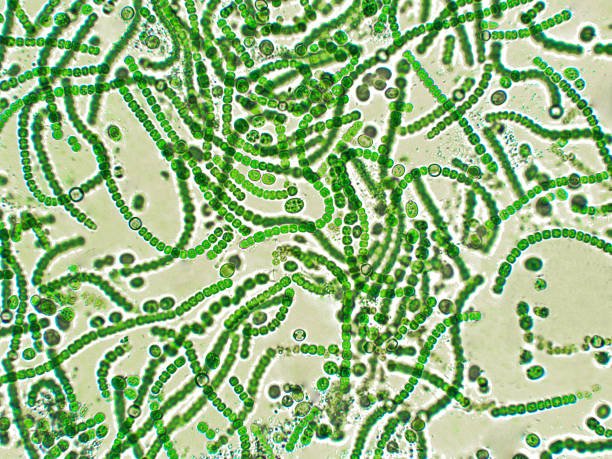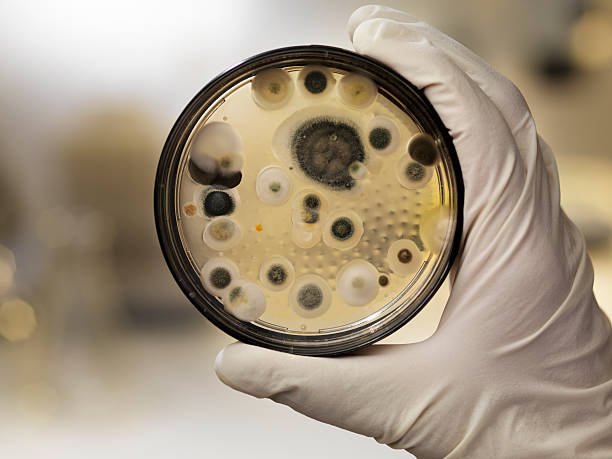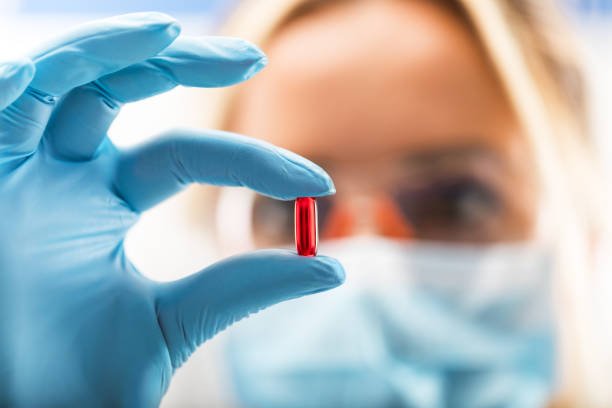Marine biotechnology harnesses the vast biodiversity of marine organisms to develop innovative solutions in medicine, industry, and environmental sustainability. From drug discovery to bioengineering, this field leverages unique marine compounds with transformative economic and therapeutic potential. As exploration of the ocean’s resources deepens, marine biotechnology emerges as a key driver in advancing both science and global industries.
Table of Contents
What is Marine Biotechnology

Marine Biotechnology involves developing products and processes derived from marine organisms using biotechnology, molecular and cellular biology, and bioinformatics. This scientific field focuses on ocean exploration to discover new pharmaceutical drugs, chemical compounds, enzymes, and other innovations. It also promotes advancements in aquaculture, seafood safety, bioremediation, biofuels, and more.
Recent developments in high-throughput sequencing (HTS) and environmental DNA (eDNA) analysis have revolutionized the exploration of microbial diversity in the ocean. These technologies have facilitated the study of microbial communities without the need for prior cultivation, offering new insights into both abundant and rare species in marine ecosystems.
Marine biodiscovery is particularly focused on identifying bioactive compounds produced by marine microorganisms. Functional metagenomics and integrative omics approaches, such as meta-transcriptomics and meta-proteomics, are now used to link specific genes to biochemical activities, enhancing the discovery of enzymes, antibiotics, and other bioactive molecules. However, a significant challenge remains in the cultivation of many marine microbes, with over 85% currently unculturable in laboratory settings due to the complexities of replicating their natural environments.
Additionally, unique marine environments like the seafloor, submarine caves, and biofilms harbor untapped biodiversity with high potential for biotechnology. These ecosystems, often characterized by extreme conditions, host microorganisms capable of producing novel secondary metabolites, such as biofilms’ exopolysaccharides (EPS), which are crucial for biotechnological applications in fields such as bioremediation and drug development.
Application of Marine Organisms in Biotechnology

Metazoans
Early marine natural product research concentrated on marine metazoans like sponges, cnidarians, gastropods, and tunicates due to their representativeness and ease of collection. These organisms produce complex compounds for various functions, including defense and communication.
Notable Marine-Derived Drugs:
- Vidarabine and Cytarabine: Derived from the Caribbean sponge Tectitethya crypta.
- Ziconotide: A synthetic form of ω-conotoxin from the Pacific cone snail Conus magus.
- Ecteinascidin-743 (Trabectedin): Derived from the Caribbean ascidian Ecteinascidia turbinata
Challenges and Advancements: The discovery of new marine-derived compounds continues, with sponges and cnidarians being prominent sources. The sustainable supply of marine organisms remains a challenge, but advancements in cell culturing and mariculture are promising.
Macroalgae and Seagrasses

Seaweeds:
Seaweeds are mostly utilized in biofuels, food supplements, cosmetics, and more. Seaweed production has seen a significant increase, with over 95% coming from aquaculture. The active substance yield from seaweeds varies widely. Seaweeds host endophytes that produce bioactive compounds with potential medical and industrial applications.
Seagrasses:
Seagrasses are essential for coastal ecosystems, providing food and habitat. Seagrasses are rich in polyphenols, flavonoids, and fatty acids with various health benefits. They offer promising applications in medicine and industry, but sustainable harvesting and alternative production methods are necessary to avoid ecological disruption.

Microalgae
Microalgae exhibit rapid growth rates and can double their biomass multiple times per day. While theoretical yields are high, practical yields are lower due to various cultivation challenges. Microalgae are considered “Cell Factories” for producing bioactive substances such as antioxidants, lipids, and pigments. They can be used in:
- Bioenergy: Production of biodiesel, bioethanol.
- Food & Feed: Nutritional supplements and additives.
- Cosmetics: Ingredients for skin care and beauty products.
- Pharmaceuticals: Production of bioactive compounds for drugs.
Cultivation and Challenges:
Large-scale cultivation often uses land and can involve wastewater and CO2 recycling. The biochemical composition of microalgae can be optimized by adjusting environmental parameters.
Key Species and Compounds:
- Dunaliella: Produces β-carotene.
- Nannochloropsis: Rich in ω-3 fatty acids, used for eicosapentaenoic acid (EPA) and docosahexaenoic acid (DHA) production.
- Haematococcus pluvialis: Produces astaxanthin, a potent antioxidant.

Bacteria and Archaea
Many marine bacteria and archaea are extremophiles, thriving under extreme conditions such as high temperatures, salinity, or pressure. They produce enzymes and metabolites of biotechnological interest.
Applications and Examples:
- Enzymes: Thermophilic and psychrophilic enzymes for industrial processes.
- Chitinase: Enzymes from extremophiles can hydrolyze chitin, a major polysaccharide.
- Carotenoids: Haloarchaea produce carotenoids with antioxidant and anticancer properties.
Marine Bacteria:
- Actinobacteria: Known for producing a wide range of bioactive metabolites, including anticancer agents like salinosporamide A.
- Cyanobacteria: Produce diverse bioactive peptides and toxins, useful in medical, food, and cosmetic applications.
- Proteobacteria: Potentially prolific sources of new drug leads and antibiotics.
Cultivation and Research Challenges:
Establishing pure cultures of marine microorganisms remains a challenge. However, advances in genomics are providing insights into the genetic potential of uncultured microorganisms.

Marine Fungi
Marine fungi are a diverse and often overlooked group of microorganisms inhabiting various oceanic environments. They colonize different ecological niches and are found in association with organisms across all trophic levels. Marine fungi act as saprobes, symbionts, and parasites, indicating their versatile ecological roles. Despite ongoing efforts to discover new species, marine fungi remain less studied compared to other marine microorganisms. It is estimated that approximately 10,000 marine fungal species are yet to be described.
Marine fungi can be isolated from a variety of substrates, including invertebrates, decaying wood, seawater, sediment, seaweeds, and mangrove detritus. Factors influencing their distribution include hydrogen ion activity, hydrostatic pressure, ionic composition, osmotic response, oxygen availability, salinity, tidal exposure, temperature, and substrate availability. They are typically more abundant in coastal environments and the upper 30 meters of the sea surface, with deep-sea sediments being a significant habitat where they can dominate. About 120 fungal species have been found in deep-sea hydrothermal vent sediments.

Biotechnological Potential:
Marine fungi produce a wide range of hydrolytic and oxidative enzymes, including alginate lyase, amylase, cellulase, chitinase, glucosidase, inulinase, keratinase, ligninase, lipase, nuclease, phytase, protease, and xylanase. These enzymes exhibit optimal activity at temperatures from 35 to 70°C and pH values ranging from 3 to 11. Their ability to thrive in extreme conditions makes them valuable for various biotechnological applications.
Marine fungi are also prolific producers of bioactive molecules. In 2016, marine fungi accounted for 36% of the 1,277 new natural products described, compared to 14% from marine bacteria. They have been identified as sources of novel anticancer, antibacterial, antiviral, and anti-inflammatory compounds. Additionally, they are used in the production of biosurfactants, enzymes, and for bioremediation. Endophytic fungi from macroalgae also produce biologically active metabolites with diverse applications.
Thraustochytrids
Thraustochytrids are a group of marine protists that, despite their common referral as microalgae, are not photosynthetic and lack plastids. They belong to the class Labyrinthula within the Chromista kingdom. These protists develop ectoplasmic networks and exhibit gliding mobility. Thraustochytrids reproduce through heterokont, biflagellate zoospores. Their diversity is still being explored, with molecular markers such as 18S rDNA sequences being used to identify and classify them.
Thraustochytrids are major colonizers of mangrove environments and play crucial roles in organic material degradation and marine biogeochemical cycles. They are heterotrophic, consuming dissolved and particulate organic matter.
Biotechnological Potential
Thraustochytrids are important sources of polyunsaturated fatty acids (PUFAs), particularly docosahexaenoic acid (DHA) and docosapentaenoic acid (DPA). They produce these compounds through a polyketide synthase system, which differs from the classical fatty acid synthesis. Their potential as an alternative to fish oil and a renewable source of biofuels is significant, with the oil from Schizochytrium sp. being deemed safe for consumption by the US FDA.
Thraustochytrids also produce a range of enzymes, including agarases, amylases, pectinases, chitinases, and carrageenases. These enzymes have applications in various industries, including cleaning, textiles, leather, biofuels, and environmental, pharmaceutical, and cosmetic sectors. Their ability to digest tarballs and their potential as sources of squalene and carotenoids add to their commercial value.
Marine Viruses
Marine viruses are crucial but often underexplored components of marine ecosystems. They are predominantly bacteriophages, with an estimated 10³⁰ virioplankton in the world’s oceans. Viruses can exist as Virioplankton—a dynamic, rapidly turnover component of the marine environment—or in association with macro and microorganisms. This association involves a vast genetic diversity and plays a role as a gene reservoir for prokaryotic communities.

Roles and Impact
Marine viruses contribute significantly to global carbon cycling and can influence their host’s metabolism. They have been identified in various marine organisms, including corals, sea cucumbers, and sponges. In sponges, viruses have been observed in different body compartments, such as within cells, associated microbes, extracellular matrices, and epithelium.
Cyanophages and Mycoviruses
Cyanophages are the most abundant marine viruses and are critical in Biogeochemical cycles and microbial evolution. They influence microbial populations through their lytic actions, altering metabolic outputs and facilitating horizontal gene transfer.
Recent research has expanded into marine fungi, revealing new mycoviruses. Unlike bacterial viruses, mycoviruses do not cause lysis but rather accumulate in high levels without cytotoxic effects, often creating persistent and cryptic infections. These interactions can modulate host behavior and provide adaptive advantages. Recent findings also suggest that mycoviruses can influence the production of secondary metabolites, such as mycotoxins, highlighting their potential in biotechnological applications.
Biotechnological Applications
Bacteriophages, being the most abundant entities on the planet, are gaining renewed interest due to the rise of antibiotic resistance. They offer promising alternatives to antibiotics for treating resistant pathogens and for enhancing aquaculture processes that currently rely heavily on antibiotics. Additionally, bacteriophages are being explored for controlling bacterial pathogens in crops and for decontaminating livestock, thereby reducing pathogen risk in food chains. They also serve as cost-efficient, highly stable, and specific biosensors for detecting pathogenic bacteria.
Marine Biotechnology and Economy
Energy

Microalgae and seaweed play a pivotal role in bioenergy production. Microalgae, rich in lipids, have been widely studied for biodiesel production due to their high growth rates and abundance. However, economic feasibility remains a challenge due to limitations in dense cultivation and high harvesting costs. Genetic modification of strains like Nannochloropsis and Phaeodactylum tricornutum is being explored to overcome these challenges.
Seaweed offers sustainable biomass for biofuel, particularly biogas and bioethanol. Seaweed-based renewable energy technologies also show potential in solid electrolyte alternatives for solar cells, promoting low-cost, environmentally friendly solutions.
Food, Feed, and Nutraceuticals
Marine organisms provide sustainable solutions for food and feed production to address growing global food demands like Seaweeds and Jellyfish are integral to Asian and Northern European diets and are gaining popularity in other regions. The development of novel food processing techniques for marine-based products is advancing despite strict EU regulations on novel foods.
Marine-Derived Compounds like Fish, shellfish, micro- and macroalgae, bacteria, and fungi yield valuable bioactive ingredients used in functional foods, nutraceuticals, and dietary supplements. These compounds provide health benefits, including anti-inflammatory, antioxidant, antimicrobial, and anti-diabetic properties.
Fish Oil and Fish Meal Replacements: Microalgae are emerging as an alternative to fish oil in aquaculture, offering essential lipids and amino acids. Meanwhile, live feeds, such as Artemia, rotifers, and copepods, are used in marine fish larval rearing, further supported by optimized microalgae prey.

Agronomy
In agronomy, marine biomass such as seagrasses and seaweeds is being researched for applications like biofertilizers, crop protection, and soil restoration. Historically used as organic soil amendments, these marine resources hold promise due to their chemical properties and effects on soil fertility. They can improve soil structure and carbon sequestration, although challenges remain, such as the slow nutrient availability and potential environmental trade-offs in controlled composting processes. Additionally, plant biostimulants derived from marine sources like seaweeds and microalgae contain phytohormones that enhance plant growth, stress tolerance, and yield.
Bioremediation
In bioremediation, marine organisms like bacteria, fungi, and algae show potential for breaking down pollutants such as hydrocarbons, heavy metals, and plastics. These organisms are increasingly explored for wastewater treatment and ecosystem restoration. Algae, for instance, can bioaccumulate heavy metals, while sponges and marine fungi have been studied for oil spill bioremediation. Importantly, algae have emerged as a potential resource for climate change mitigation, through carbon capture, methane reduction in cattle, and enhancing soil carbon storage.
Cosmetics and Cosmeceuticals
In cosmetics and cosmeceuticals, marine-derived compounds are gaining attention for their pharmaceutical-like properties. Ingredients from microalgae, bacteria, fungi, and macroalgae are already being used for their hydrating, anti-aging, UV-protective, and anti-inflammatory properties in skincare products. Compounds like mycosporine-like amino acids (MAAs) and marine polysaccharides serve as natural UV filters, moisturizers, and collagen protectors.
Bio-inspired Materials
Bio-inspired materials derived from marine organisms offer promising potential in various biomedical and technological applications due to their unique adaptations to extreme environmental conditions, such as high salt tolerance, pressure resistance, and thermal adaptability. Marine sources like algae, jellyfish, sponges, and crustaceans contribute biomolecules like polysaccharides, enzymes, peptides, and Bio-ceramics that have applications in tissue engineering, bio-adhesives, drug delivery, and even dental biomaterials.
For example, bioactive ceramics can be synthesized from corals and sea urchins, mimicking bone structures. Similarly, sponges, particularly their siliceous structures, have inspired solutions in biomaterial fabrications, with applications extending to optical technologies and biomedical materials.
Diatoms, with their nanostructured biosilica, are another marine source with significant potential. Their unique mechanical properties make them ideal for use in nanomaterials, enhancing polymer composites. In addition, biopolymers derived from seaweed, such as ι-carrageenan, have been utilized for neuromorphic systems due to their biocompatibility. Biopolymers, such as sodium alginate, carrageenan and fucoidan derived from marine algae, chitosan obtained by deacetylation of the chitin extracted from the exoskeleton of crabs and shrimps, and porous silica shell of marine diatoms are used for the development of drug and cell delivery systems, hydrogels and bioactive coatings and also scaffolds for next generation of tissue engineering products
Challenges remain, such as the isolation and purification of biopolymers for targeted drug delivery and maintaining material consistency across varying species and environmental conditions. Nevertheless, the possibilities extend beyond biomedical uses, with marine biomaterials being explored for sustainable packaging solutions. Algal biomass is emerging as a feedstock for biodegradable plastics, offering a potential solution to plastic waste problems.
Harnessing Marine Organisms for Drug Discovery and Well-Being

Marine organisms like algae, sponges, cyanobacteria, and fish have been instrumental in the development of pharmaceuticals for treating cancer, chronic pain, hypertriglyceridemia, and antiviral conditions.
Seventeen drugs from marine organisms have been approved, including anticancer agents like cytarabine, fludarabine phosphate, and trabectedin. Ziconotide for chronic pain and ω-3 fatty acid esters for hypertriglyceridemia are other notable examples.
Future prospects for marine-derived compounds in healthcare are promising, particularly in the fields of nutraceuticals, cancer therapies, antimicrobial treatments, and bone health. Carotenoids and phlorotannins extracted from marine organisms are valued for their potent antioxidant properties and have shown potential in preventing chronic diseases such as cancer, diabetes, and neurodegenerative disorders. In cancer research, bioactive compounds from cyanobacteria, such as dolastatin 10 analogs and breitfussins, are emerging as promising therapies, particularly as kinase inhibitors for selective cancer treatments. Additionally, marine extracts from cyanobacteria, microalgae, and other species demonstrate significant antibacterial and antifungal activities, offering potential solutions for combating resistant pathogens. In the realm of bone health, oyster extracts have shown potential in treating osteoporosis due to their ability to inhibit osteoclast activity, suggesting a future role in managing bone-related diseases
Marine organisms hold immense potential for advancing healthcare and well-being, particularly through their unique bioactive compounds. These include carotenoids, phlorotannins, and metabolites from cyanobacteria, all of which exhibit antioxidant, anti-inflammatory, and anticancer properties. Carotenoids, for instance, have been shown to mitigate chronic diseases such as heart disease, type 2 diabetes, and neurodegenerative disorders. Phlorotannins, derived from brown seaweed, find applications in food, pharmaceutical, and cosmetic industries.
Cyanobacteria, like Nostoc sphaeroides, offer therapeutic benefits for conditions such as diarrhea, hepatitis, and hypertension. Other compounds, such as cyanovirin, demonstrate potent antiviral activity against HIV. Marine hydrozoans like Thuiaria breitfussi have shown selective inhibition of cancer cells, while fermented Pacific oyster extracts could combat osteoporosis.
Marine sponges have long been explored for their vast chemical diversity, producing antiviral, anticancer, and immunosuppressive agents. Notably, sponge-derived nucleosides laid the groundwork for ara-A and ara-C, pivotal drugs in treating leukemia and lymphoma. Additionally, sponge metabolites show promise against diseases like malaria, cardiovascular disorders, and even COVID-19.
The emerging role of jellyfish-derived molecules in antioxidant, antimicrobial, and wound healing therapies underscores the broader therapeutic possibilities. Furthermore, the green fluorescent protein (GFP), originally extracted from jellyfish, revolutionized molecular biology research, highlighting marine organisms’ vast potential in medical innovation.
These bioactive compounds and their applications suggest a promising future for marine-derived therapeutics in addressing global health challenges.
Conclusion
Marine biotechnology holds immense promise as a frontier in biotechnological research and development. With the marine environment offering a vast reservoir of diverse and largely untapped biological resources, scientists are uncovering novel organisms, enzymes, and bioactive compounds with significant applications in medicine, industrial processes, and environmental sustainability. Advances in high-throughput molecular techniques, such as metagenomics, metaproteomics, and genome mining, have greatly enhanced our ability to explore marine microbial communities and their biochemical potential. However, challenges remain, particularly in culturing marine microorganisms and understanding complex microbial interactions in their natural habitats. As technological innovations in sampling, cultivation, and genetic analysis continue to evolve, the marine ecosystem’s contribution to biotechnology is poised to grow, offering new opportunities for sustainable bio-based solutions to global challenges.
References
https://www.frontiersin.org/journals/marine-science/articles/10.3389/fmars.2021.629629/full#B457
https://www.sciencedirect.com/science/article/pii/S1874390024000028#:~:text=Marine%20drugs%2C%20extracted%20from%20a,et%20al.%2C%202011)
https://www.ncbi.nlm.nih.gov/pmc/articles/PMC7912129/

